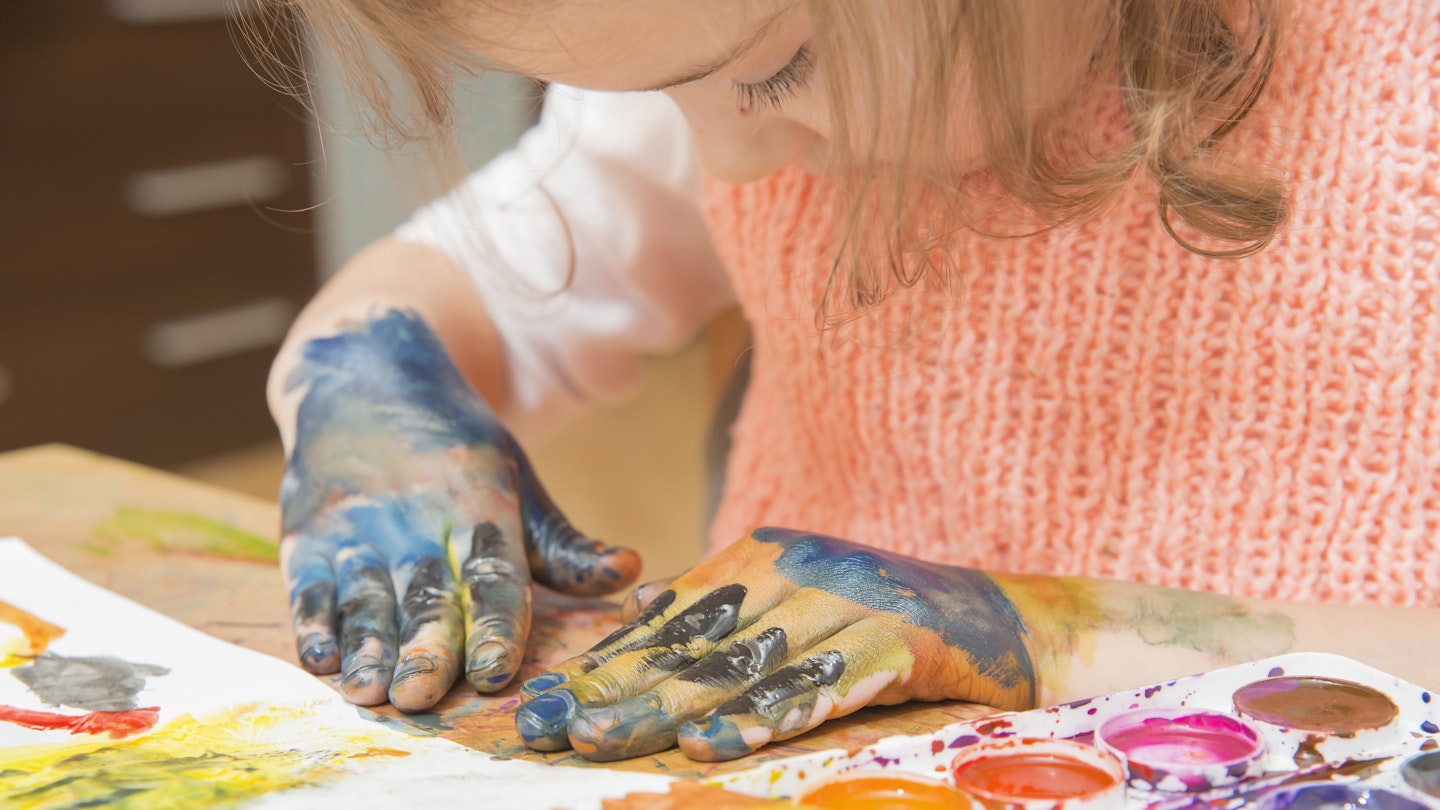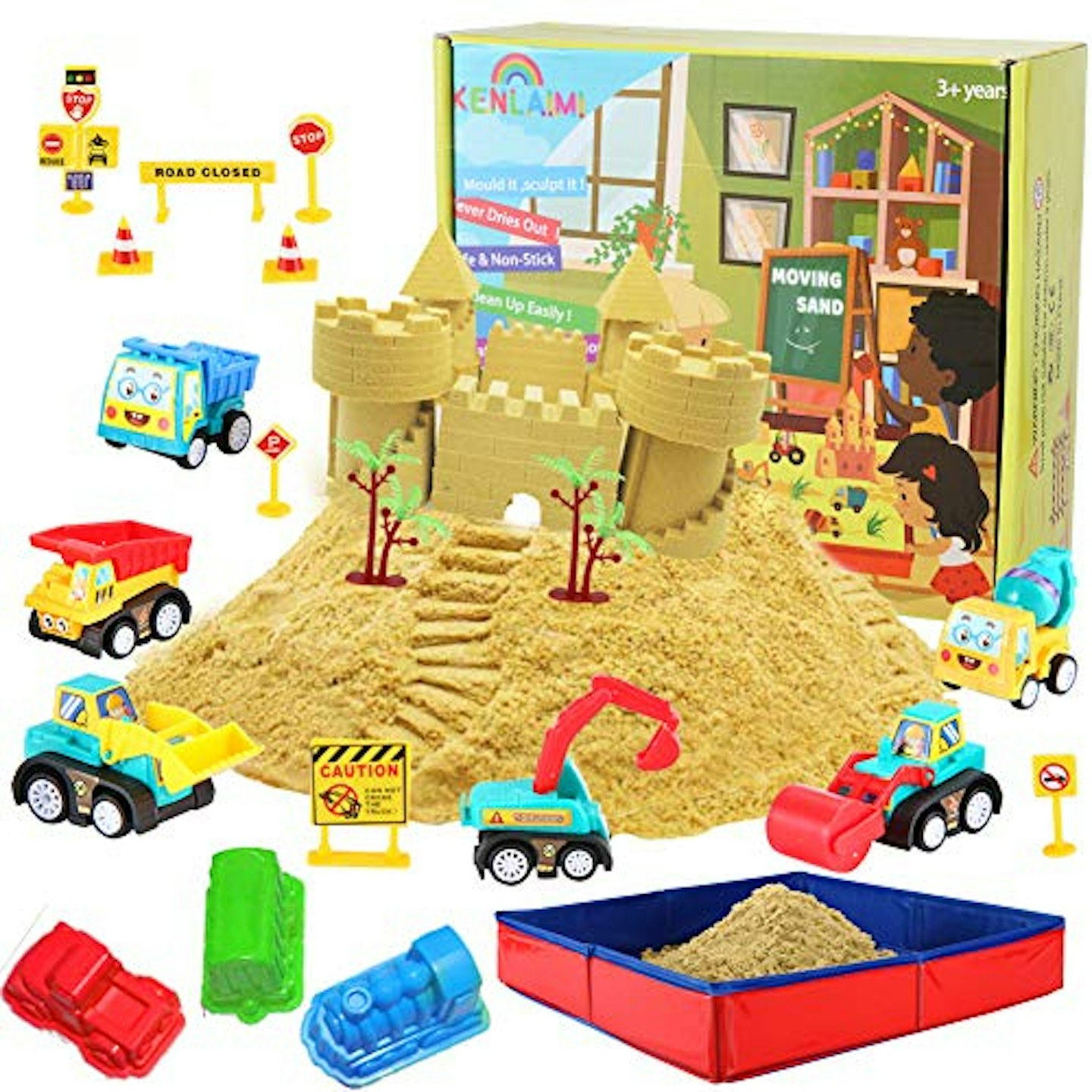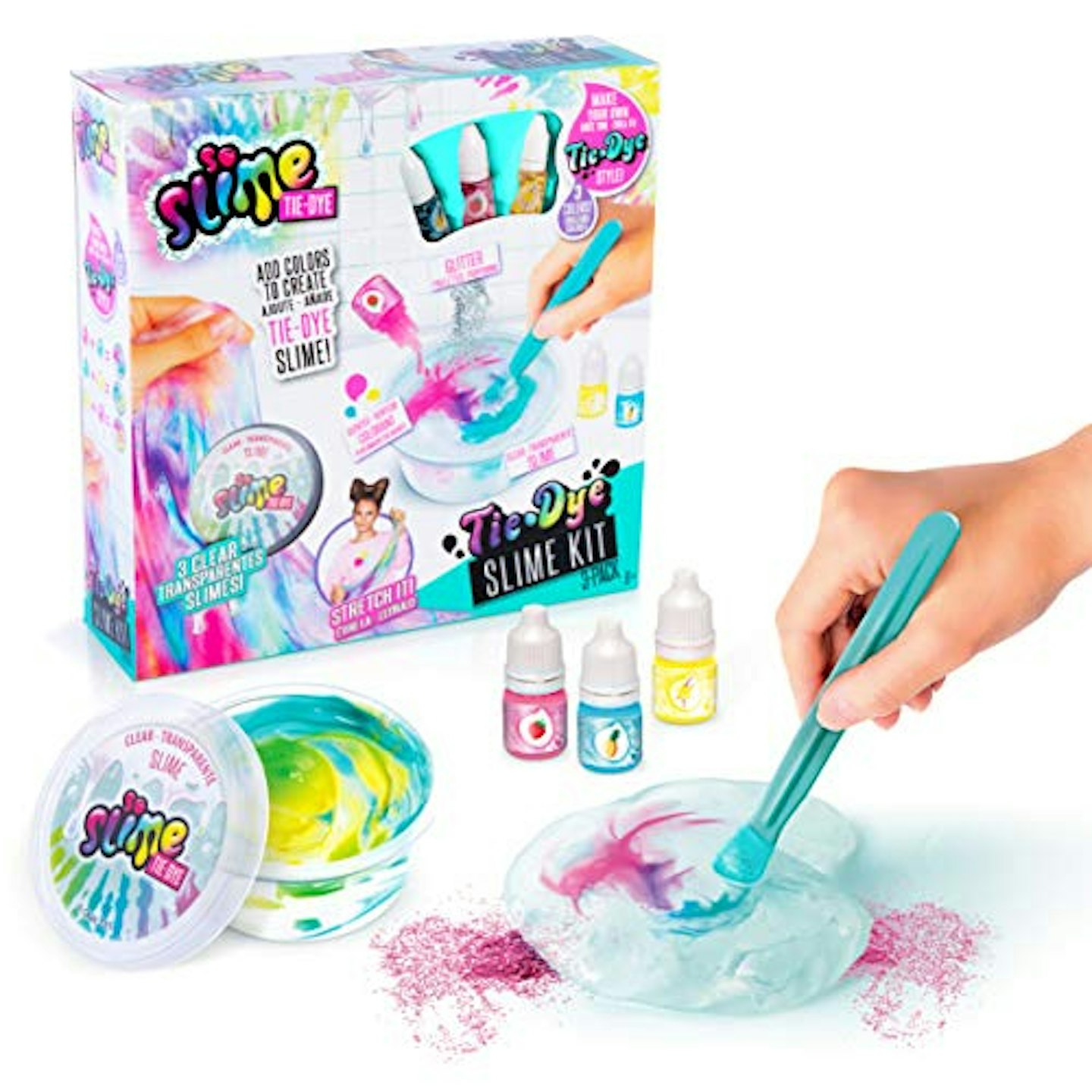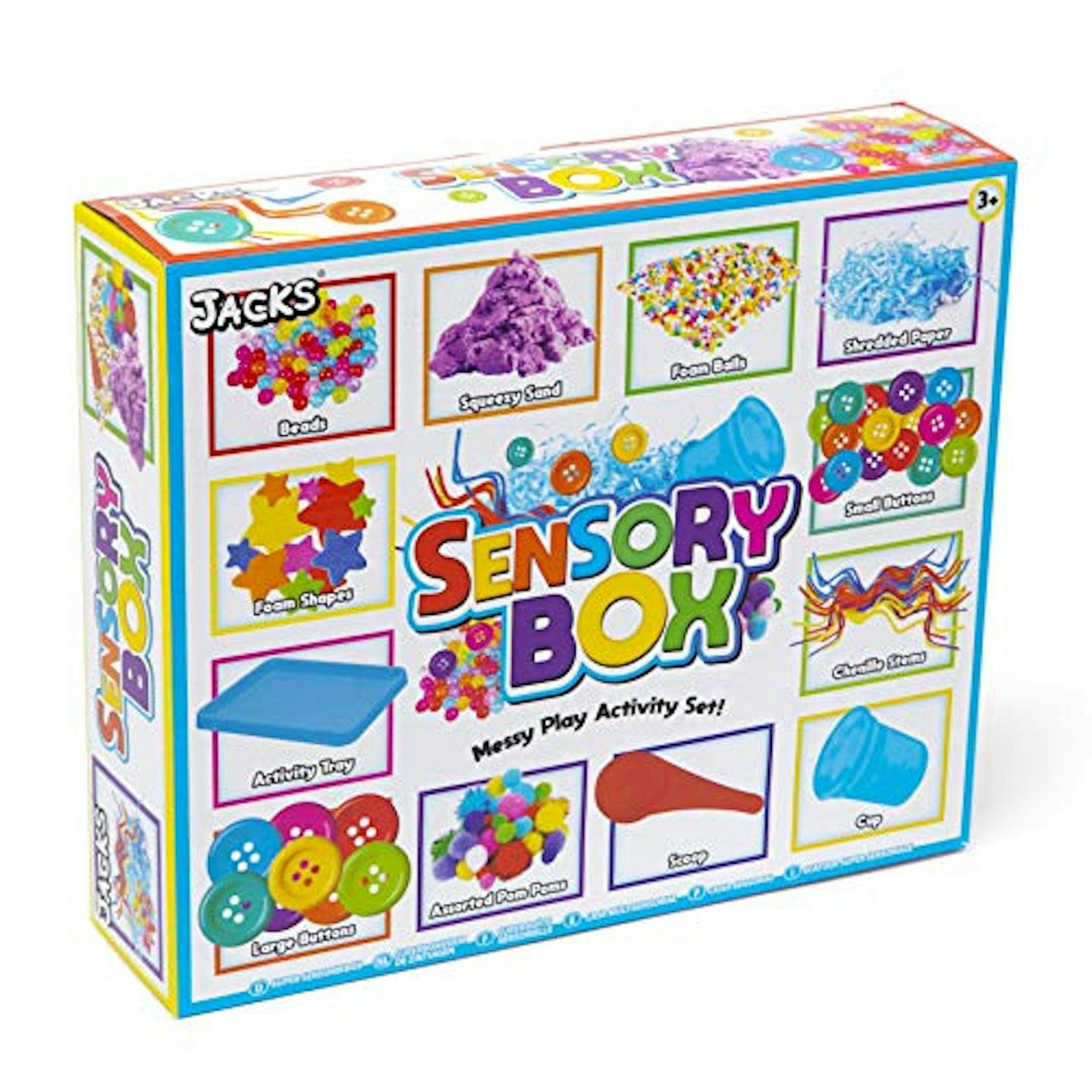Young children learn so much from messy play fun. While they’re busy squishing and squelching, pouring and pushing, they’re carrying out an endless stream of experiments, which help with early learning and finding out about their world. That's one of the reasons why it keeps them so occupied – give your baby some toy trucks and they’ll be busy for 10 minutes, but give them some trucks and a tray of rice to drive, and your tot will come up with new ways to play all afternoon.
It’s great for their development too: not only will problem-solving help to grow their brain, but it’ll also provide them with lots of opportunities to refine motor skills. Language skills will improve too – because how can kids know what the word ‘slimy’ really means unless they feel the sensation for themselves? And children's imagination will benefit because while a toy that produces music can only be played one way, a tub of goo creates infinite possibilities.
Yes, we know all too well that some of those possibilities could create a mess that needs clearing up. But you’ll find lots of clever ways to limit cleaning as some concoctions require a quick wash of hands and vacuum afterwards.
Plus, warmer months offer the bonus of taking it all outdoors! All these recipes are so easy to make as you’ve probably already got it in your cupboards; you’ll also be happy to ditch it at the end of a happy day of play and whip up a batch of something new next time.
Some of these sensory activities reward a sense of touch so richly, and smell so lovely, that you’ll find yourself playing alongside your youngster. Which of these fun messy play ideas will you start with first?
Keep your child under close supervision at all times. All of these suggestions are intended for a parent and child to play together.
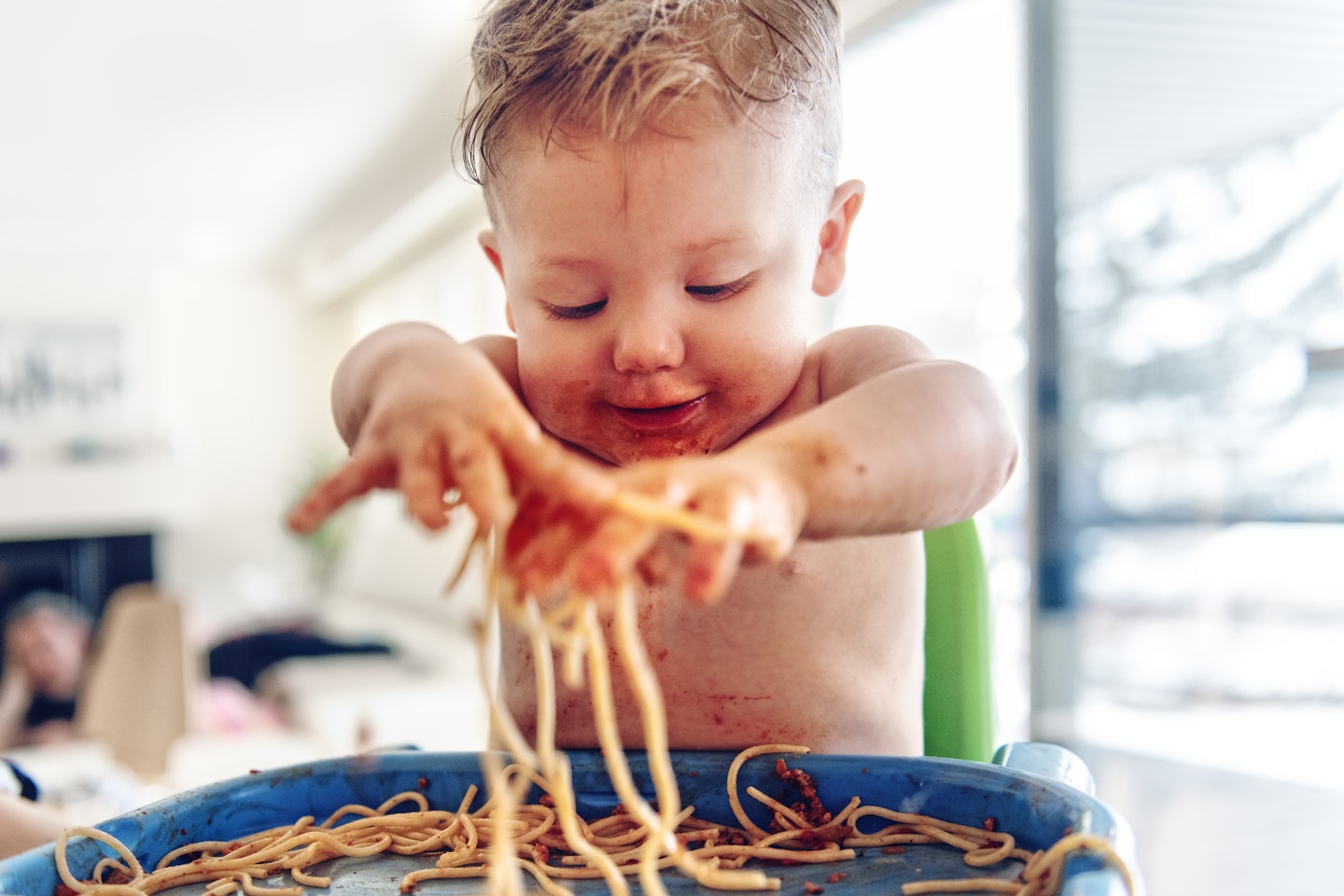
Messy play ideas for baby and toddlers
Have fun with food
When your baby is young, they’ll put everything in their mouth, so wait until they stop gnawing and nibbling on whatever’s within reach before getting out the play dough. This point will happen at different ages with different children, and you’re the best judge when it comes to knowing if your child is ready.
Even then, make sure all the dough and paint, goo and gloop you give to play with is edible. So, although you won’t want them having more than a small bite, because of the food colouring, sugar or salt content, there’s no need to worry if they're curious and have a quick taste.
Puffy rice
If your youngster is still getting to grips with figuring out how this funny thing called gravity works, then there's no better medium for experiments than a tub of Rice Krispies. Pushing toys into the rice will help kids learn that things don’t disappear just because they can’t see them, it also encourages problem-solving.
Add beakers and bowls, a scoop and a cardboard tube, or nothing at all, and let your child discover the satisfying crunch a tiny puff of rice makes when crushed between a little finger and thumb. It's easy to vacuum up too!
Jelly play dough
This is a sweet-smelling treat. It’s made using jelly crystals and makes deliciously scented, soft dough in ice-cream colours. Make up a few batches using different flavoured jellies or to cut out ‘cookies’, bake ‘cakes’ and set up an ‘ice-cream stall’.
You will need:
175g flour
85g salt
23g sachet of Hartley’s Jelly crystals
1 tbsp cream of tartar
225ml water
2 tbsp veg oil
To make:
-
Put all the dry ingredients into a saucepan and mix.
-
Pour on the water and oil. Mix until there are no lumps.
-
Place over low heat, stirring all the while. Keep scraping the dough from the bottom of the pan as it forms. This will take three to four minutes.
-
Remove from the heat, and cool for five minutes.
-
Knead for three minutes on a chopping board.
Rainbow Spaghetti
A tub of these wriggly worms is good for motor skills practice, and the fun sensory experience is unlike any other! Pull a worm to see how much it stretches. Chop it up with a toy knife. Use tongs to try to pick it up. Pull individual strands out and lay them on a piece of paper to make interesting shapes. Leave these overnight to dry and kids will enjoy snapping them too.
You will need:
500g spaghetti
Sealable freezer bags
Different-coloured food colouring
To make:
-
Cook the spaghetti according to the instructions on the packet. Drain into a colander and rinse under cold running water, until cool.
-
Divide the spaghetti into as many freezer bags as you want colours.
-
Add a few drops of food colouring into each bag – a little goes a long way. Seal each bag and move the spaghetti around inside: your toddler will enjoy helping you do this.
-
Leave for 10 minutes to absorb the colour, then tip all the spaghetti into a large tub.
Sloppy jelly
A tub of jelly, made up with twice the amount of water, makes for a wonderfully colourful, scented, textured goo. Give your child a couple of plastic pots to scoop and tip, and they’ll be very happy to explore. Or set some of their easily washable plastic toys in the jelly for them to excavate.
Get touchy-feely
Little kids will love to feel as they play. Don’t underestimate the sensory pleasure and relaxation that comes from touching something that feels good, in just the same way that you might enjoy the effects of your favourite scented candle. Toddlers will be fascinated by how different mediums move too.
Rather than showing children what they can do, give kids a few tools and let them find out for themselves, then they can show you! Each time your tot plays with dough, give them different accessories for a completely different experience. Try…
Straws
Cookie cutters
A container with lots of different compartments, such as an egg box
Paper
Cake cases
Pinecones
Strands of uncooked spaghetti
Cheerios
Toy plastic animals
Magic rice
Uncooked rice moves like water – it can be poured from a teapot and stirred in a cup, so it’s a great addition to a tea party. It makes fantastic rubble on a pretend building site for mini diggers to shift or an ice-cube tray make for happy scooping.
But, what your youngster will love the most is when you tip different coloured rice into piles in a big tub and put them in charge of mixing them together to make it ‘magic’.
You will need:
2kg white rice
Seven sealable freezer bags
Blue, red and yellow food colouring
Directions:
-
Divide the rice between seven freezer bags.
-
Add a few drops of one, two or three colours into each bag.
-
Seal and shake to distribute the colour.
-
Spread the coloured rice out on paper plates or baking trays lined with baking parchment, then leave to dry for at least two hours.
Cloud dough
If it’s a rainy day and you need an activity for a toddler that will keep them busy for ages, make this. Mixing for just five minutes makes a powder that’s great for driving cars through, scooping up with mini diggers and making all sorts of tyre tracks. Compact it together and it will also hold a shape well, so it’s fun with a muffin tray and pots for a spot of pretend baking. Have the vacuum on standby, though!
You will need:
1kg flour
200ml vegetable oil
To make:
-
Tip the flour into a bowl and pour in the oil.
-
Mix with your hands, rubbing the ingredients between your fingertips, as if you’re making a crumble topping. It’s ready when, after three to five minutes, the mixture sticks together when squeezed.
My first play dough
This is made from taste safe and edible ingredients, so although it’s best to discourage kids from putting it into their mouths, a teeny nibble won’t hurt. It’s so soft, it’s easy to mould and poke fingers into. Suitable from 12 months, discard after play.
You will need:
100g baby rice
125g corn flour
100g pot of fruit purée
Three tbsp vegetable oil
75ml water
To make:
-
Mix the baby rice and corn flour together.
-
Add the fruit purée and vegetable oil and mix.
-
Add up to 75ml water, one tablespoon at a time, mixing as you go. When the mixture just starts to come together, knead to pick up the dry ingredients. Add a little more water if needed.
-
Tip on to a chopping board and knead for three to five minutes until smooth.
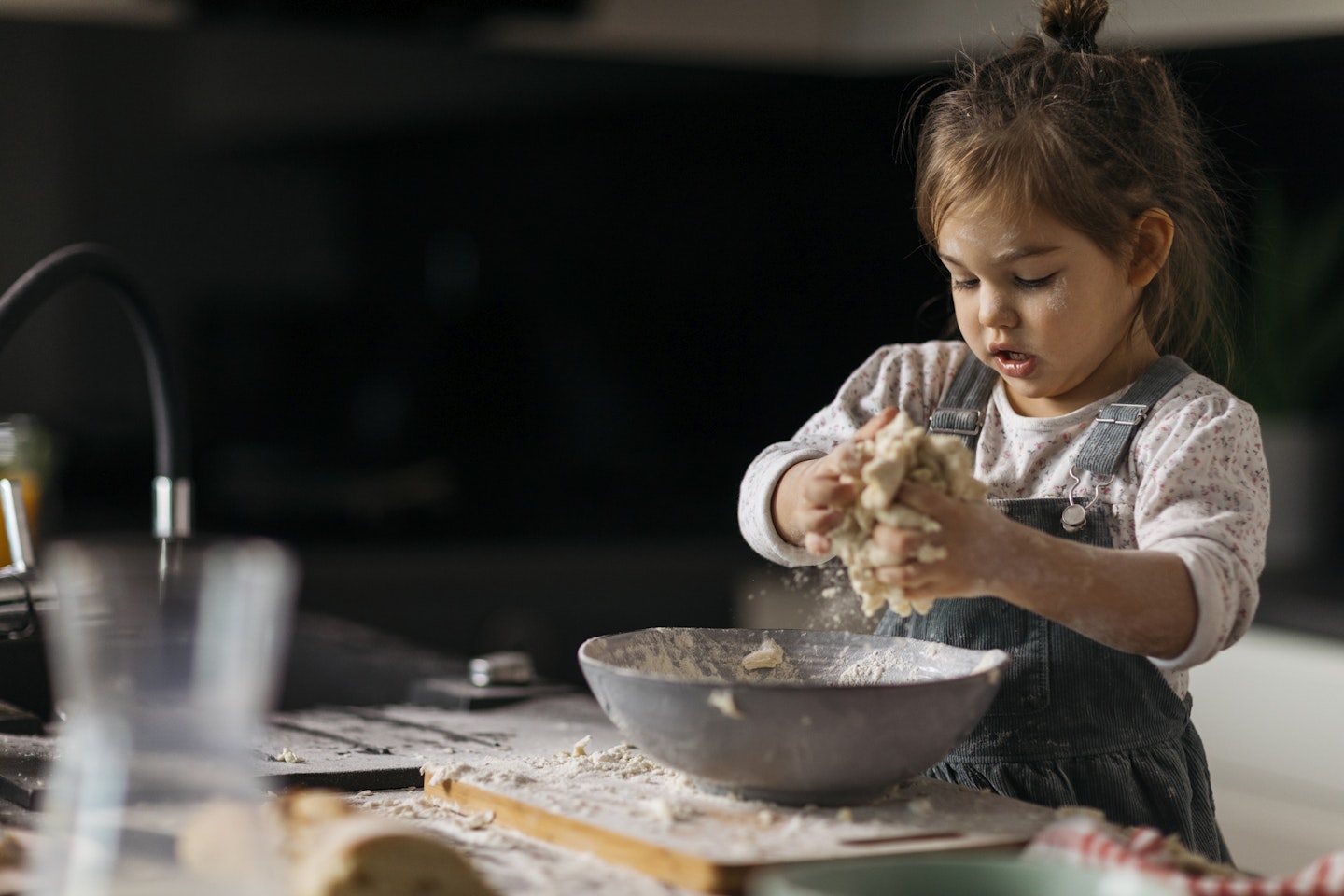
Every day dough
Better for older children who know not to nibble, this takes 10 minutes to mix, doesn’t crumble, works well in dough machines and stores well in an airtight container. We love this messy play idea!
You will need:
175g flour
175g salt
One tbsp cream of tartar
225ml water
One tablespoon vegetable oil
Food colouring (optional)
To make:
-
Tip the flour, salt and cream of tartar into a saucepan and mix.
-
Pour the water and oil in and mix well.
-
Over a low heat, stir constantly, scraping the dough from the base.
-
After two to three minutes, when it forms a dough, remove it from the heat and leave to cool for five minutes.
-
Knead for three minutes.
-
Separate into sections and knead a few drops of food colouring into each.
Scoop up some slime
With an older toddler who understands that slime should be kept out of their mouth, you can really start to explore different textures in messy play ideas. Don’t be surprised if you find yourself enjoying it, all these recipes make stuff that feels lovely to play with, and your youngster will love experimenting with it.
Gloopy goo
This is the slimiest slime ever. It drips and drags from fingertips, oozes and squeezes from fists. If your little one is in need of a swamp for their collection of dinosaurs, look no further.
You will need:
75g cornflour
120ml baby shampoo
Green food colouring
To make:
-
Put the cornflour and baby shampoo into a bowl and mix together until smooth.
-
Add the food colouring and mix again.
Cloud fluff
This super-soft dough smells amazing and feels even better. It’s mouldable and stretches into oozing lengths of loveliness. You’ll love this one too: although it’s dry to the touch, it will leave your hands feeling moisturised and your cuticles in tip-top condition!
You will need:
175ml
Baby hair conditioner
250g cornflour
To make:
-
Put the two ingredients into a bowl and mix – the dough will take a minute to come together.
-
Knead for a further minute until smooth.
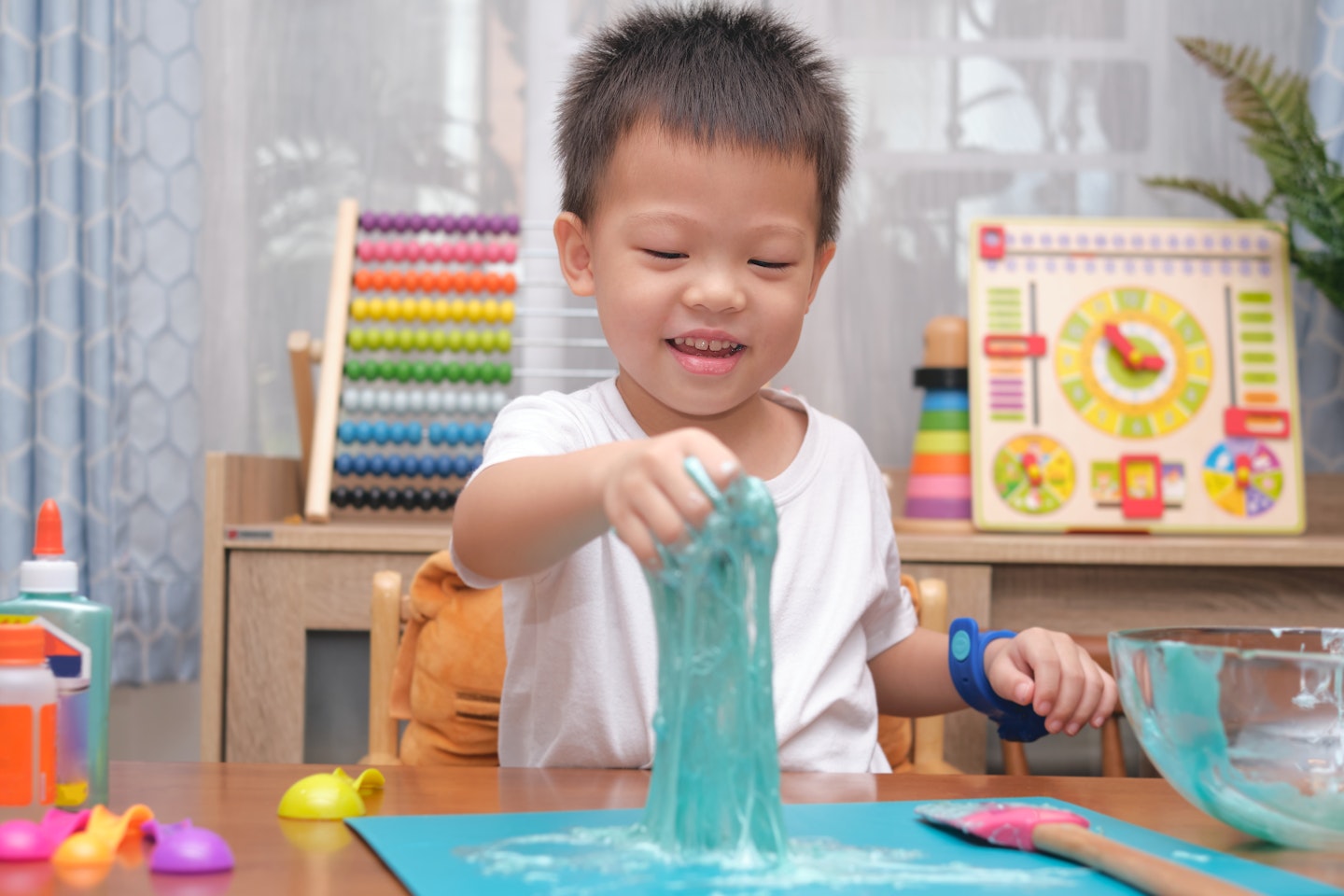
Oobleck
Have you ever read the Dr Seuss classic, Bartholomew and the Oobleck? Well, it’s a tale of a king who gets annoyed at the rain in spring, the sun in summer, fog in autumn and snow in winter. When the royal magicians make sticky green slime called Oobleck fall from the sky instead, he learns not to moan – after a boy called Bartholomew saves the kingdom from the goo, of course.
This recipe for Oobleck makes some very odd goo indeed. Move your hands through it slowly or pour it, and it’s a slimy liquid. But squish or squash it together, or hit it, and it’s solid. Make it and your toddler will love it – and read the story too! Pop it on a tuff tray to keep things nice and tidy.
You will need:
300g cornflour
225ml water
A few drops of green food colouring
To make:
-
Put the cornflour in a bowl and pour over the water and food colouring.
-
Mix until there are no lumps – you’ll have to mix slowly so it stays liquid!
Clever sand
Pinch a few handfuls of clean sand from the sandpit to make this great learning activity. All the other ingredients make it extremely easy to mould, so your youngster will enjoy pressing it into pots to make mini sandcastles. It’s fun to add food colouring to the water before mixing, if you like – try making two colours, so they gradually mix to make a new colour. This can be stored in an airtight container for another day – spray on a little water if it dries out between plays.
You will need:
One litre play sand
110g cornflour
One tbsp baby shampoo
200ml water
To make:
-
Put the sand into a large bowl and mix in the cornflour.
-
In a separate container, mix the baby shampoo and water.
-
Pour the liquid into the sand mixture and mix well. Add a little more water if you need to, until the mixture starts to clump together.
Make a masterpiece
You don’t need us to tell you that your youngest will make a mark on the world! And the process begins early. Their early mark-making efforts may look random, chaotic and accidental, but the physical enjoyment they will feel when making these large muscle movements brings untold joy!
Patio paint
Does your tot love finger painting? If you have a patio or driveway made of non-porous stone or concrete, this chalk-based paint is a must. Make a pot of white patio paint, or use different coloured chalks to create a set. Give your youngster paintbrushes of different sizes, plastic easy-to-rinse toys that they can use to make prints, or encourage them to tip out a puddle of paint and drive toy cars through, or walk through it themselves. The best thing? All their artwork will disappear when it rains!
You will need:
A few sticks of the same-colour chalk
Sealable freezer bags
Water
To make:
-
Put the sticks of chalk into a freezer bag, remove most of the air and seal.
-
Lay an old towel over a chopping board, place the bag of chalk flat on it, then fold the towel over the top.
-
With the rolling pin, gently bash the chalk until it is a powder. Your youngster might like to have a go with a toy hammer too.
-
Snip a corner off the freezer bag, so you can easily pour the powder.
-
into a tub without making a mess.
-
Stir in a little water until it is a similar consistency to paint.

Window paint
The beauty of this paint is that, when it’s time to clear up, it simply rinses away. So give your little one a fat paintbrush and an outside window as a canvas, and let them create – ready with the hosepipe for when they've finished. This is made in a muffin tin with a different colour in each. Keep the paint to the glass, though, as the food colouring may stain rubber seals.
You will need:
150ml baby bubble bath
150g baby powder
Food colouring
To make:
-
Mix the bubble bath with the baby powder until it forms a thick, smooth paste.
-
Pour or spoon into the compartments of a muffin tin.
-
Add a few drops of food colouring to each compartment, using a combination of food colouring to create additional colours, and mix.
Don't have time to make messy activities? There are plenty of places that you can buy items that your kids will love to try out. Here are the best products for messy play ideas for toddlers and children.
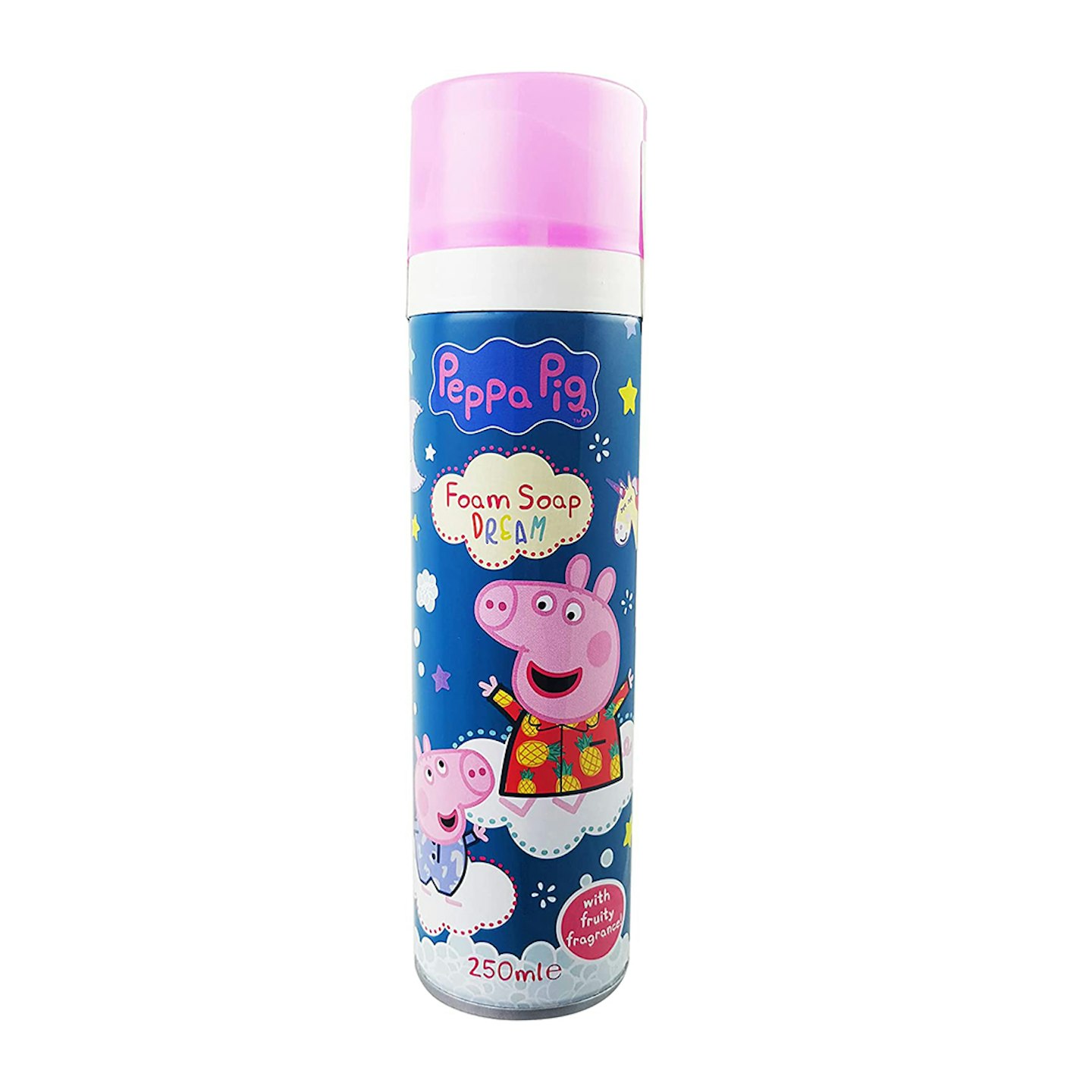
Wow! This mouldable foam is unlike anything we've ever seen before. Any Peppa Pig fans will love getting their hands on it and getting messy, while parents will love that it's easy to clean up.
Pros:
-
Cheap as chips
-
Peppa Pig themed
-
Gentle formula
Cons:
- Do a small skin test first
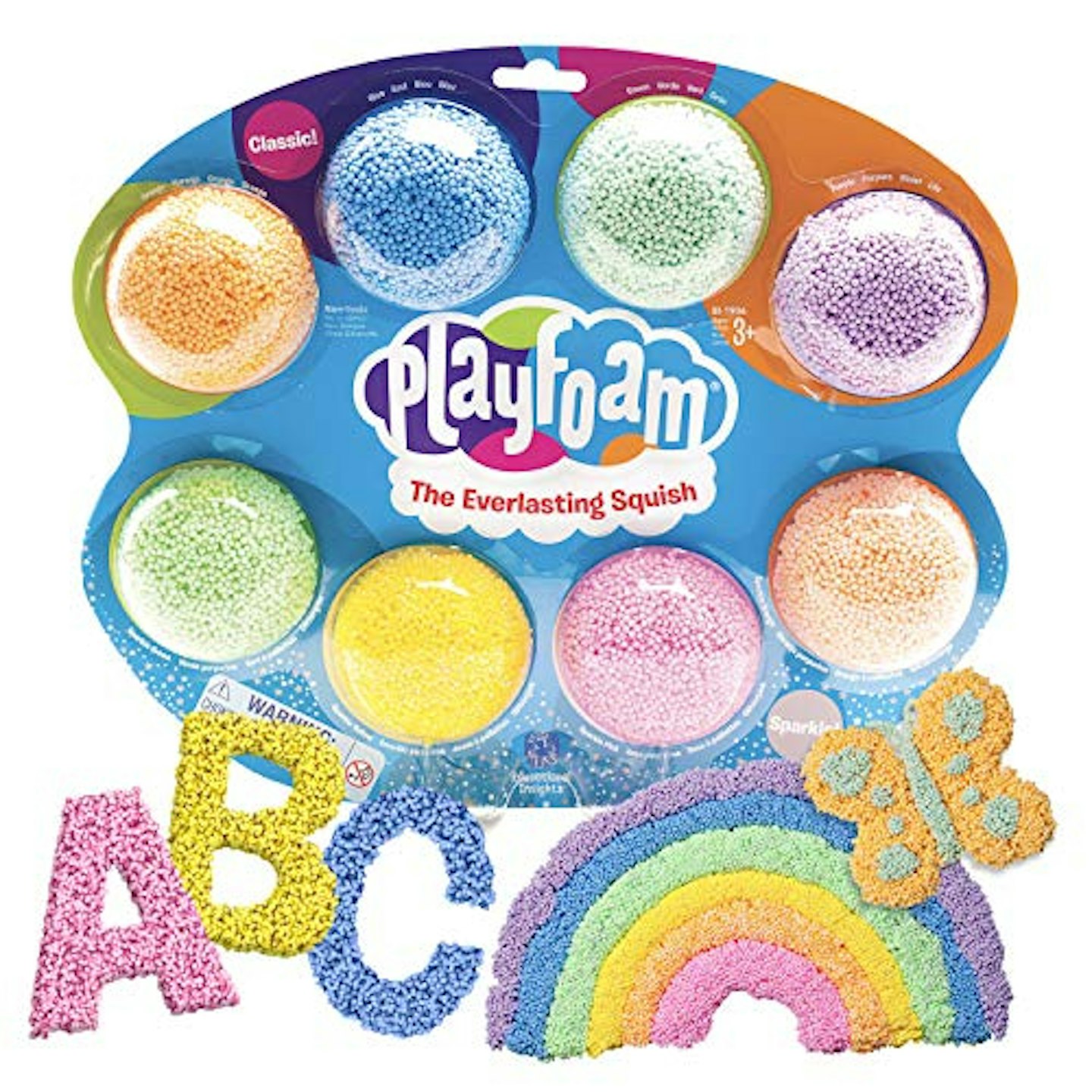
From one foam option to another, the Learning Resources Playfoam is a different experience altogether as it's an explosion of colour. If your child is stimulated by design rather than the feel, this will keep them entertained for hours.
Pros:
- Never dries out
- Sensory experience
- Sculpts easily
Cons:
- Sticky
- Some reports of falling apart
Create the ultimate messy play area in your living room, nursery or back garden, thanks to this Kenlaimi Play Sand set. We love that it comes with 2lbs sand, nine cool castle and car moulds, six pull back construction truck, 10 road signs and 11 sand tools.
Pros:
- Lots of creative fun to be had
- Bring the beach home
Cons:
- Not Kinetic sand
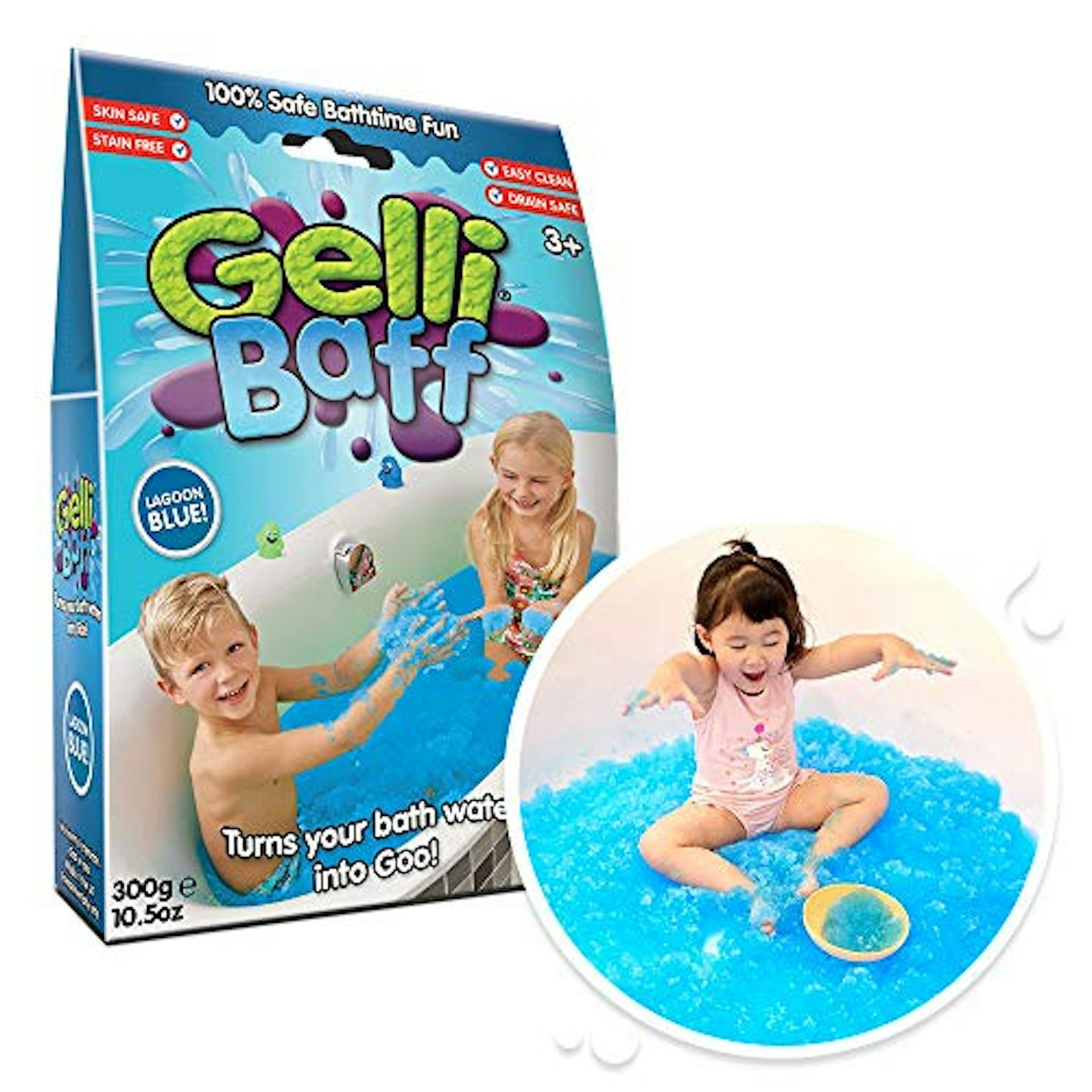
Bathtime will never be the same again as this pack turns water into blue goo. Not only is it fun, but it's also kind to skin, easy to drain and won't stain your bath. Amazing!
Pros:
- Good value for money
- Great for sensory play
- Use just one-quarter of the bag to create 10 litres.
Cons:
- Hard to clean if spilt
Nothing says messy play quite like slime, right? And, kids love it! Older kids will love adding colours to create their own unique tie dye slime.
Pros:
- No mess
- Great smell
- Not sticky
Cons:
- More for older children
- Lots of packaging
This plaything should be known as a treasure chest of messy play ideas - the sensory box includes pom poms, beads, foam beads, pipe cleaners, buttons, shredded paper, foam shapes, an activity tray, a cup and a scoop. Children can use these as a sensory experience or while making crafts.
Pros:
- Ages three and over
- Promotes healthy development
- Good quality items
Cons:
- Quite a small box
